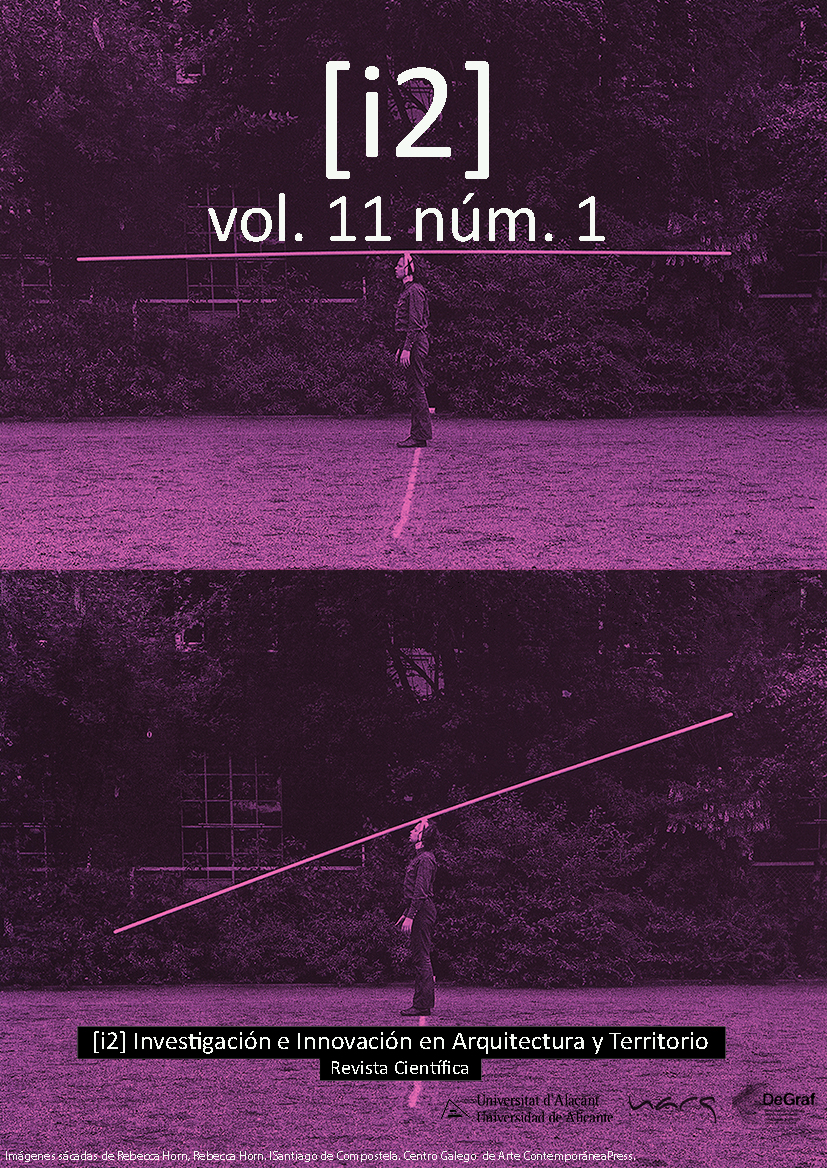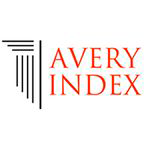Dimensión inmersiva del folklore y la cultura material tradicional en el marco de una crítica al progreso técnico. Apuntes en torno al museo de Henry Chapman Mercer
DOI:
https://doi.org/10.14198/I2.22477Palabras clave:
espacios inmersivos, imaginarios modernos, Henry Chapman Mercer, museología, museografía, ornamento, cultura materialResumen
Este artículo aborda críticamente la relación entre experiencia inmersiva y progreso técnico/tecnológico, mediante un análisis estético-cultural de los imaginarios de la modernidad y el pasado preindustrial, en el contexto de los archivos etnográficos y museos de folklore, la objetología y el ornamento tradicional/artesano, cuyas formas de enunciación y exhibición se fundan, de manera sui generis, a partir de estrategias inmersivas y desbordantes, pese a su prurito de antimodernidad. En el marco del hispanismo anglosajón de finales del XIX, y específicamente a través de la presentación panorámica del singular –y desconocido en el contexto académico español– museo etnográfico fundado por Henry Chapman Mercer a comienzos del siglo veinte en Doylestown (Pennsylvania), se propone una reflexión en torno a la naturaleza inmersiva de los archivos de las culturas populares tradicionales y su valor crítico en el presente, abordando la emergencia de experiencias inmersivas tecnomodernas que operarían en nuestra época como una compensación frente a la devaluación de la experiencia material y social.Citas
Arbor, Marilyn (1994). Tools & Trades of America's Past. Doylestown, Pennsylvania, The Mercer Museum · Bucks County Historical Society.
Benjamin, Walter. (2008). Cartas de la época de Ibiza. Valencia: Pre-Textos.
Black, G. (2005). The Engaging Museum: Developing Museums for Visitor Involvement. New York, Routledge.
Bolotine, N. & Laing, C. (2002). The World's Columbian Exposition: The Chicago World's Fair of 1893. University of Illinois Press.
Boone, M. (2019). «The Spanish element in our nationality»: Spain and America at the world's fairs and centennial celebrations, 1876-1915. Pennsylvania: The Pennsylvania State University Press. https://doi.org/10.5325/j.ctv14gp0hm
Brennan, Kathleen (2019). The Historical Man: Henry Chapman Mercer and the Transcendent Aesthetics of History. [The CUNY Graduate Center].
Buck-Morss, Susan (1995). Dialéctica de la mirada. Walter Benjamin y el proyecto de los Pasajes. Madrid: Visor / La Balsa de la Medusa.
Bucks County Historical Society (1985). Guide to the Microfilm of the papers of Henry C. Mercer and Records of the Moravvian Pottery and Tile Works. Doylestown, PA, The Bucks County Historical Society.
Cairol, E. & Macsotay, T. (eds.) (2021) El objeto desbordante. Espacios inmersivos y estrategias multisensoriales en el arte. Espacio Tiempo y Forma. Serie VII, Historia Del Arte, (9).
Clark, Robert J. [ed.] (1972): The Arts and Crafts Movement in America, 1876-1916. Art Museum, Princeton University -Art Institute of Chicago. Princeton University Press.
Commission of the USA For The Columbian Historical Exhibition in Madrid (1892). Commemoration of the fourth centenary of the discovery of America : Madrid, [Columbian Historical Exposition] 1892.Washington: Press of W. F. Roberts.
Commission of the USA For The Columbian Historical Exhibition in Madrid (1895) Report of the United States Commission to the Columbian Historical Exposition at Madrid: 1892-1893: with special papers. Washington: Government Printing Office.
Cuarto Centenario del Descubrimiento de América (1892). Catálogo de los objetos expuestos por las comisiones de los Estados Unidos de América en la Exposición Histórico-Americana de Madrid. Madrid: Est. Tipográfico Sucesores de Rivadeneyra.
Cuarto Centenario del Descubrimiento de América (1891) Catálogo de los objetos que presenta la nación Española a la Exposición Histórico-Americana de Madrid. Madrid: Est. Tipográfico Sucesores de Rivadeneyra.
Crary, J. (2008a). Suspensiones de la percepción. Atención, espectáculo y cultura moderna, Madrid, Akal.
Crary, J (2008b). Las técnicas del observador. Visión y modernidad en el siglo XIX. Murcia, Cendeac.
Dewhurst Kurt C. & Hall, Patricia & Seeman, Charlie (2017). Folklife and Museums: Twenty-first-century Perspectives. Lanham: Rowman & Littlefield.
Díaz Cuyás, J. (2015) "Entrevista a Juan José Lahuerta, Barcelona, 17 de septiembre de 2013". Desacuerdos 8, Centro José Guerrero, Diputación de Granada, Museu d'Art Contemporani de Barcelona, Museo Nacional Centro de Arte Reina Sofía y Universidad Internacional de Andalucía - UNIA, Arte y pensamiento, pp. 214-230.
Domingo, Marta R. (2021). "Revolución en Matadero: el primer centro de arte inmersivo de España llegará a la Nave 16 en 2022", Abc.es.
Dyke, Linda F. (2009): Henry Chapman Mercer. An annotated Chronology. The Bucks County Historical Society.
Driscoll, David B. (1996): "Henry Chapman Mercer. Technology, Aesthetics, and Arts and Crafts Ideals", Denker, Bert [ed.]: The Substance of Style. Perspectives on the American Arts and Crafts Movement. Winterthur, Delaware, The Henry Francis du Pont Winterthur Museum Inc.
Escobar, Ticio (2008). El mito del arte y el mito del pueblo. Cuestiones sobre el arte popular. Buenos Aires, Ediciones Metales Pesados.
Fayolle, [Marqués de] (1893). Coup d'œil sur l'Exposition rétrospective de Madrid. Caen: Henri Delesques, Imprimeur-Libraire. https://doi.org/10.3406/bulmo.1893.10922
Gómez Alonso, R. (2021). La configuración del espectáculo audiovisual en el Madrid de comienzos del siglo XIX: la fantasmagoría como preludio del arte total. Espacio Tiempo y Forma. Serie VII, Historia Del Arte, (9), 115-136. https://doi.org/10.5944/etfvii.9.2021.30600
Grau, O. (2003) Virtual Art. From Illusion to Immersion. Cambridge, The MIT Press. https://doi.org/10.7551/mitpress/7104.001.0001
Harmann Gemmill, Hellen (2006). The Mercer Mile. The Legacy of Henry C. Mercer. Terry A. McNealy [ed.] Pennsylvania.
Harmann Gemmill, Hellen (1972). The Mercer Mile. The Story of Dr. Henry Chapman Mercer and his concrete buildings. Doylestown, PA, Bucks County Historical Society.
Hakvoort, Gido (2013). The Immersive Museum. ITS'13, St. Andrews, United Kingdom, October 6-9. https://doi.org/10.1145/2512349.2514598
Hough, Walter (1893). The Columbian Historical Exposition in Madrid. Washington, Columbia, American Anthropological Association. https://doi.org/10.1525/aa.1893.6.3.02a00030
Houghton, Walter E. (1985). The Victorian Frame of Mind, 1830-1870. Yale University Press.
Jones, Owen (2010) El patio de la Alhambra en el Crystal Palace. Calatrava, J. y Tito J. [intr.]. Madrid: Abada.
Jones, Owen (1988) The Grammar of Ornament [fascímil]. London: Omega Books Ltd.
Jordan, John W. "Moravian Immigration to Pennsylvania, 1734-1765", The Pennsylvania Magazine of History and Biography Vol. 33, No. 2 (1909), pp. 228-248.
Kagan, Richard L. (2010). "Hispanomanía en Estados Unidos: pertenencia cultural y apropiación del patrimonio cultural de España, ca. 1890-ca. 1930", Revista Complutense de Historia de América, vol. 36, pp. 37-58. https://doi.org/10.5209/rev_RCHA.2010.v36.2
Kagan, Richard L. (2002) Spain in America: the origins of Hispanism in the United States. Urbana: University of Illinois Press.
Kagan, Richard L. (1996) [ed.] «Prescott's Paradigm: American Historical Scholarship and the Decline of Spain.» The American Historical Review. Volume 101. Issue 2., pp. 423-446. https://doi.org/10.2307/2170397
Kaplan, Wendy [ed.] (2004). The Arts & Crafts Movement in Europe & America: Design for the Modern World. New York: Thames & Hudson - Los Angeles County Museum of Art.
Karlson, Norman (2005): "Moravian Pottery", The Encyclopedia of American Art Tiles. Atglen, Schiffer P., Ltd.
Laurent le Bon & Claire Garnier & Florence Ostende (eds.) (2017), Dioramas. Paris: Flammarion.
Martínez Luna, S. (2021) "Inmersión en la imagen: del panorama a las nuevas realidades digitales". Espacio Tiempo y Forma. Serie VII, Historia Del Arte, (9), 137-160. https://doi.org/10.5944/etfvii.9.2021.30379
Mcloughlin, Marc (2012). "Designing for Meaningful Visitor Engagement at a Living History Museum", NordiCHI '12: Proceedings of the 7th Nordic Conference on Human-Computer Interaction: Making Sense Through Design, pp. 69-78.
Mercer, Henry C. (1981). Tools of the nation maker. A descriptive catalogue of objects in the museum of the Historical Society of Bucks County. Doylestown, Pa., Society at the office of the Bucks County Intelligencer.
Mercer, Henry C. (1975) The Tiled Pavement in the Capitol of Pennsylvania. Souderton, The Pennsylvania Guild of Craftsmen. Indian Valley Printing.
Mercer, Henry C. (1916) Presentation of Museum to the Bucks County Historical Society. Doylestown: Bucks County Historical Society Papers, Vol IV.
Mercer, Henry C. (1895). "Chipped Stone Impliments in the Colonial Historical Exposition at Madrid", Commission of the USA For The Columbian Historica Exhibition In Madrid: Report of the United States Commission to the Columbian Historical Exposition at Madrid: 1892-1893: with special papers. Washington: Government Printing Office, pp. 367-397.
Mínguez Cornelles, V., Chiva Beltrán, J., González Tornel, P. Y Rodríguez Moya, I. (2019).Un planeta engalanado. La fiesta barroca en la Monarquía Hispánica, (Triunfos barrocos, serie minor, 1), Castelló de la Plana, Universitat Jaume I, Servei de Comunicació i Publicacions. https://doi.org/10.6035/TriunfosBarrocos.Minor.2019.1
Moravian Pottery And Tiles Works (1999). Moravian Tiles. A Reprint of the 1913 Sales Catalogue of the Moravian Pottery and Tiles Works. Doylestown Pennsylvania.
Moser, Stephanie (2012) Jones: Designing Antiquity. Owen Jones, Ancient Egypt And The Crystal Palace. New Heaven: Paul Mellon Center for Studies in British Art, YUP
Nichols, Kate (2015): Greece and Rome at the Crystal Palace: Classical Sculpture and Modern Britain, 1854-1936, Oxford, OUP. https://doi.org/10.1093/acprof:oso/9780199596461.001.0001
Poos, Thomas G. (2008): Fonthill, the home of Henry Chapman Mercer and American architectural treasure. Warrminster, PA, Manor House Publishing Co., Inc.
Pous, Alejandro M. [Coord.] (1993): De Gabinete a Museo. Tres siglos de historia. Madrid, Ministerio de Educación, Cultura y Deporte. Secretaría General Técnica.
Purbrick, Louise (ed.) (2001). The Great Exhibition of 1851: New Interdisciplinary Essays. Manchester: Manchester University Press.
Read, Charles H. (1983). Report on the historical exhibition at Madrid on the occasion of the fourth centenary of Columbus in 1892. London, Order of the Trustees.
Reed, Cleota (1996). Henry Chapman Mercer and the Moravian Pottery and Tile Works. Philadelphia: UPENN Press.
Samida, Stefanie (2019). "Material Culture", en Agnew, Vanessa & Lamb, Jonathan & Tomann, Juliane, The Routledge Handbook of Reenactment Studies. Key Terms in the Field, UK, Routledge. https://doi.org/10.4324/9780429445637-27
Sánchez-Mateos, Rafael (2020) "Los destinos cruzados de la imposibilidad. Perspectivas de género en torno al Museo del Pueblo Español en compañía de Carmen Baroja". Espacio, Tiempo y Forma Serie VII, Historia del Arte (UNED) , 8, Feminismo y museo. Un imaginario en construcción. Patricia Molins Ed., pp. 171-202. https://doi.org/10.5944/etfvii.8.2020.27418
Suárez-Zuloaga, Ignacio [ed.] (2010). When Spain Fascinated America. Fundación Zuloaga. https://doi.org/10.5944/etfvii.8.2020.27418
Swigger, Jessie (2014). "History is bunk": assembling the past at Henry Ford's Greenfield Village. Amherst: University of Massachusetts Press.
Valero, Vicent (2017). Experiencia y pobreza. Walter Benjamin en Ibiza. Cáceres: Periférica, 2017.
Vega, Jesusa (2010). Ciencia, Arte e Ilusión en la España Ilustrada. Madrid: CSIC, 2010
Viera, Manuel (2020). El imaginario español en las Exposiciones Universales del siglo XIX. Madrid, Cátedra.
Descargas
Estadísticas
Publicado
Cómo citar
Número
Sección
Licencia
Derechos de autor 2023 Rafael Sánchez-Mateos Paniagua

Esta obra está bajo una licencia internacional Creative Commons Atribución 4.0.







